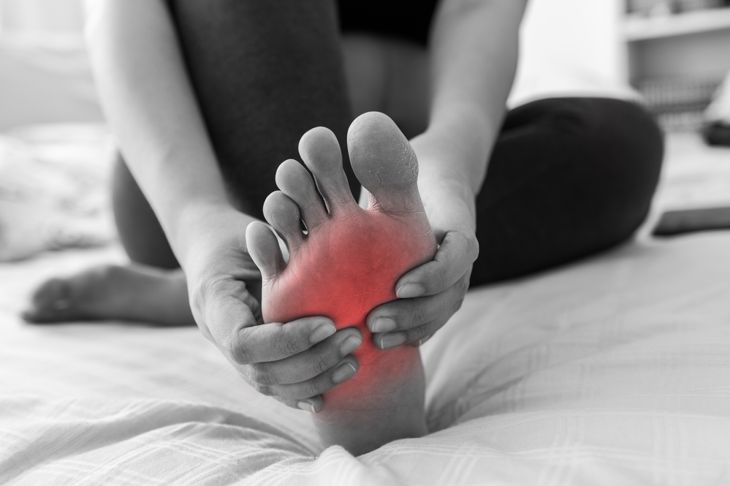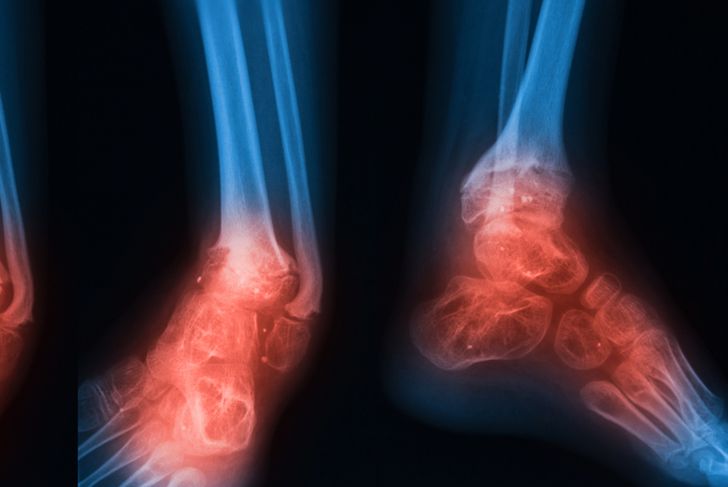Osteomyelitis is an inflammation of the bone and bone marrow mostly due to bacterial infection. “Osteo” refers to the bone. “Myelo” refers to the bone marrow, and “itis” indicates inflammation. The most common bacteria that causes osteomyelitis is Staphylococcus aureus. Infection usually occurs after an injury that exposes the bone to the outside environment, such as bone fractures or surgery. Sometimes, there is an infection in a different organ inside the body that spreads to the bone via the blood. Certain diseases like diabetes rheumatoid arthritis can lower or weaken the immune system and therefore increase the risk of developing osteomyelitis. As with any inflammation, there are two types of osteomyelitis: acute and chronic.
Fever
Normal body temperature is between 98.6 °F. People with osteomyelitis can develop a significant fever — a temperature of 100.4 °F or higher. The chemicals released during the inflammation affect the setpoint of the hypothalamus, which stimulates muscle contraction. When muscles contract, they produce heat, and the patient feels hot and sweaty. Some people think it’s a good idea to put a wet cloth on the forehead, but this is not useful. Over-the-counter medications are usually helpful, but for more severe fevers, you should seek immediate medical attention.
Fatigue
It is common for those with osteomyelitis to feel tired and exhausted. The infection can produce toxins, and the inflammatory response can drain the body’s energy sources. The infection reaches the bone as a result of trauma or spread from another organ. That means that the patient is already experiencing a previous injury or a preexisting infection, which makes it feel worse.
Redness, and Warmth
To fight any foreign organism present in one area, the body resorts to increasing the blood supply to this area. Increasing the blood supply in the infected area delivers more white blood cells that fight the infection in that area. It can also help decrease the concentration of toxins in that region. The chemical mediators produced in the area of infection cause dilation of the blood vessels supplying it. This vasodilation brings more blood to the infected area and makes it look red and hot.
Swelling
Blood consists of plasma, plasma proteins, and blood cells. As the area becomes inflamed, more blood reaches it. However, the vascular wall is lined by epithelial cells that are close to each other and don’t allow the blood components to arrive at the space between the tissue. Chemical mediators help increase the spaces between those epithelial cells, so some of the plasma and white blood cells move from inside the vessel into the tissue to dilute the toxins and fight the infectious organism. As the fluid starts to accumulate in the tissues, the area will appear swollen. The lymph nodes draining the area can also become swollen and inflamed.
Irritability and Tenderness
Certain chemical substances released during the inflammatory process include bradykinin. Bradykinin causes the vascular wall to dilate, and the spaces between the endothelial cells become wider. This change allows fluid to leak from the blood into the tissues. It’s also responsible for the feeling of pain in the affected area. Pain is important because it alerts the body to the presence of inflammation. Tenderness means that the area becomes painful on touch. The presence of visible signs of irritability can be useful in children who are too young to talk and express their pain.
Loss of appetite
Patients with osteomyelitis won’t usually want to eat and won’t consume the same amount of food they used to before infection. They feel fatigued, exhausted and weak. Some of them may even experience a sensation of unease and discomfort when eating food. Others will have strong nausea and an urge to vomit. Nausea is a nonspecific symptom that can occur due to a variety of reasons.
Loss of Function
Loss of function and reluctance to use the affected body part is one of the cardinal symptoms of any inflammation along with redness, warmth, and swelling. The loss of range of motion can be attributed to many different causes. One of those causes is that it could be a way for the body to deal with pain. If an area is painful, it’s only logical that the body tries to limit its use. This limit is described as a neurological reflex.
Back Pain
In adults, it’s common for the bone infection to occur in the vertebrae or pelvis. This leads to severe back pain that increases during the night. In children, the disease, and the resulting pain is present around the affected bone. Adults usually experience osteomyelitis due to a previous injury, low immunity or drug abuse, while children are more likely to experience it due to it spreading from another area.
General Symptoms of Chronic Osteomyelitis
Chronic osteomyelitis occurs when acute osteomyelitis is poorly or inadequately treated, but it can also appear without a previous phase of acute infection. Joint replacement, compound fractures, and infection with tuberculosis and syphilis can produce chronic osteomyelitis as an initial symptom without an acute stage. Chronic osteomyelitis may lead to persistent bone damage, pain, and loss of function.The symptoms of chronic osteomyelitis are similar to that of acute osteomyelitis: chronic pain, fatigue, and swelling. The fever is not as severe, but the patient may still experience chills and sweating. Chronic infection could also cause changes in the skin surrounding the inflamed area. It’s usually hard to treat chronic bone infection because the bacteria can become present inside the bone cells themselves. This partially protects the bacteria from the immune system and gives it time and freedom to spread from one cell to another.
Formation of a Sinus
A sinus is a blind-ended tract that extends from the site of infection in the bone to the skin. It drains the dead tissue outside of the body in the form of pus. It occurs in chronic inflammation as one of the complications of an abscess. Treating the sinus should be initiated with treating its underlying cause. This can be a long process as the bacteria causing the chronic infection can become resistant to many antibiotics. The primary goal of sinus treatment is to prevent the closure of the edges before the tract has healed.

 Home
Home Health
Health Diet & Nutrition
Diet & Nutrition Living Well
Living Well More
More




















